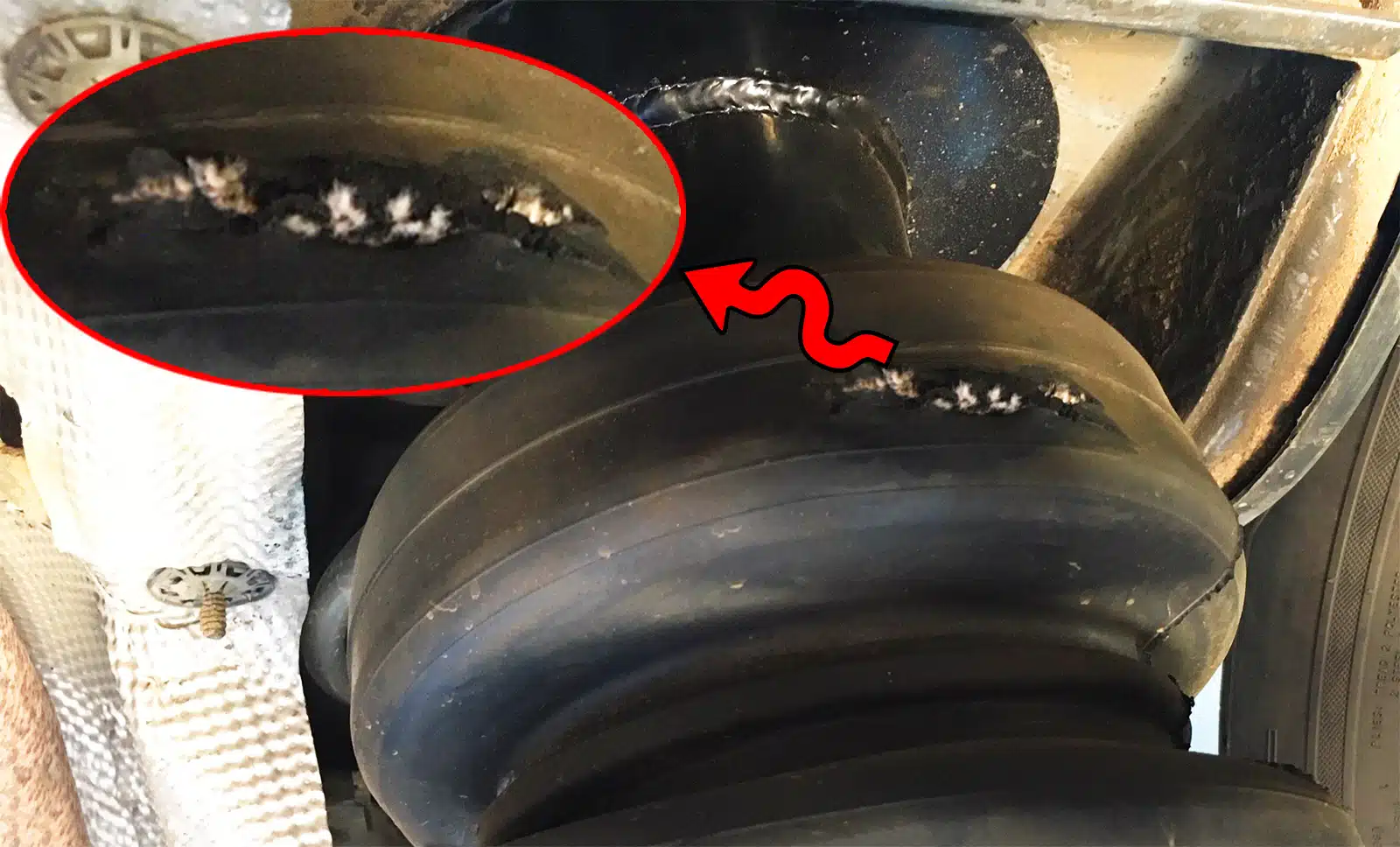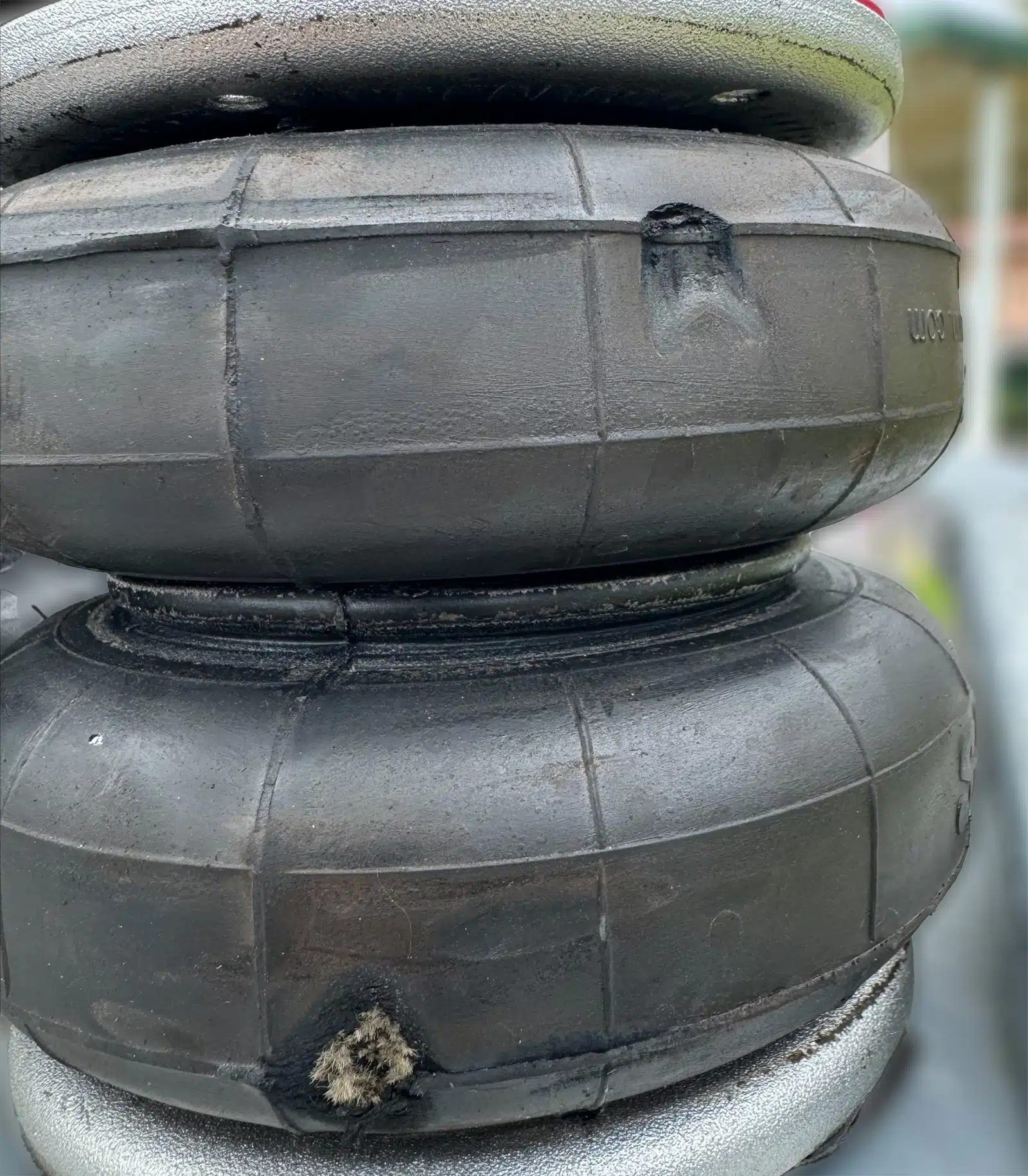

Air Bags: Durability, Failures, and Replacements
Air bags (or air springs) are incredibly robust components designed for long-lasting performance. When treated well, they often last a decade or more. Just this week, we heard from a customer who installed one of our kits 24 years ago. Despite their MOT reporting signs of perishing on the bags, the vehicle still passed! Needless to say, they were impressed with the longevity.
Air suspension is a proven technology, widely used in buses, coaches, and trucks. These systems are designed to be reliable, often lasting over 100,000 miles when properly installed and maintained.
Causes of Premature Air Bag Failure
- Abrasion from Metal Contact: If the air bag comes into contact with metal parts of the vehicle, it can wear through.
- Abrasion from Foreign Matter: Impacts from road debris can damage the bag's surface.
- Deflation: Leaving the vehicle with no air in the system for extended periods can weaken the bag.
- Overextension: Extending the bag beyond its specifications, such as during a jacked-up repair with the bag pressurised, can cause structural damage.
- Cracked End Caps: Running the suspension too low without internal bump stops or using overly long bolts can crack plastic end caps.
Metal contact is the most common issue we see, but all of these problems are preventable. It's important to note that these are not normal wear-and-tear issues, nor are they covered under warranty.
Understanding Wear and Fatigue
Over time, air bags will wear out and fatigue, much like tyres. This usually begins as tiny cracks that run vertically along the bag, often starting at the corners. These cracks are caused by the bag's inflation and deflation over hundreds of thousands - or even millions - of cycles. Initially, the cracks are superficial, limited to the outer layer (all our bags are multi-core). However, they will eventually grow deeper, leading to leaks.
- When Should You Act? Visible cracks should be addressed promptly. Left unchecked, leaks can worsen, causing the compressor to overwork and potentially fail. Replacing the bag early prevents further damage to your system.
Can Air Bags Be Repaired?
Air bags are constructed similarly to tyres, but unfortunately, they cannot be repaired for several reasons:
- Access: Most air bags are crimped at the ends, making it impossible to access the interior for proper repairs.
- Extension: Air bags can extend up to 100% of their compressed height, far more than tyres. Repairs designed for tyres cannot handle this level of movement.
- Pressure Dynamics: Repairs from the outside are pushed outward by internal pressure, making them short-lived and unreliable.
If an air bag fails, it must be replaced. Most OEM struts and bags are not designed for disassembly, which makes replacement your only option. For aftermarket systems, it's essential to identify and fix the cause of failure - often contact with another component - before installing a new bag.
Need Assistance?
If you're unsure about your air suspension or need help diagnosing an issue, our team is here to assist. Please note that we are based in central Norwich, and you can reach us at:
- Phone: 0800 772 0315
- Email: ENQUIRIES@AIRRIDE.UK